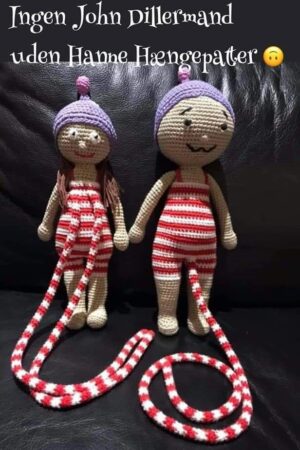In children’s television the saying goes that animated content can be exported to other countries and languages, as character voices can be re-recorded to fit various audiences. However, in order to secure access to all markets, this may also lead to certain conventions during production in terms of subject matter, archetypes and political correctness. In the 2000s, The Danish Broadcasting Corporation (DBC) was able to export their national TV dramas for adults – mostly in the genre of so-called Nordic Noir (Hansen & Waade, 2017) – often bringing different Nordic actors, screenwriters, directors, etc. together in production. Now, live-action fiction for children may also be about to travel across borders outside the Nordic region, as previously suggested on this blog (Redvall 2020).
Danish children’s television remains largely overlooked and scarcely studied. However, through some important work, researchers such as Christa Lykke Christensen (2013), Helle Strandgaard Jensen (2017) and Stine Liv Johansen (2007) have contributed to our understanding of what goes into productions and how Danish children make use of media in their everyday lives. From these accounts of Danish children’s television, it is evident that children’s own perspectives on the world – their own culture – is a key value in the eyes of public service providers and parents. Something which a lot of people seem to take pride in, and perhaps even brag about to the rest of the world.
What is a dillermand?
So, why on earth should the DBC commission an animated children’s show about a man with the world’s longest penis? Surely, that will never travel or convince anyone that Scandinavian children’s television is about children’s perspectives. The penis belongs in adult culture and should not be a key device in a narrative geared towards children. Fortunately, we are not dealing with a penis in the sense of a male sex organ. We are dealing with a dillermand. In order to explain, I would like to present a piece of playground poetry:
Åh, lå, lå, lå
Min dillermand er blå
Hvornår bli’r den gul?
Måske til næste jul
Translated:
Ah, la, la, la
My dillermand is blue
When will it turn yellow?
Perhaps next Christmas
This piece of poetry was presented to me by the then seven-year-old son of our friends. Actually, he was reciting the verse more or less compulsively every five minutes or so, testing the patience of his otherwise admirably calm parents. Importantly, the verse features the word “dillermand”, which is a childish word for penis, much like the English term “willy”, but not quite the same. The word “dillermand” is unlikely to be used as a way of referring to the penis to a child by adults. It is a word used mainly by young children to connote silliness whilst referring to the penis.
John who?
John Dillermand (DR, 2021-) is a narrated animated series of twenty x five-minute episodes, about the character John Dillermand and his gun-wielding great grandmother. John wears his Bismarck-striped one-piece bathing suit and ski hat everywhere. When the hat comes off, we can see his neatly combed hairstyle, complementing his handlebar moustache.
Stylistically, the stop-motion animation brings the pop-culture sketch show Robot Chicken (Adult Swim, 2005-) to mind, as the characters resemble sparsely animated action figures – perhaps also connoting children’s play with such plastic toys, to some degree.
The star of the show, however, is John’s dillermand. His aptly Bismarck-striped member extends to several meters, moves like a snake or an octopus arm, and oscillates between having a mind of its own and working like a superpower for John. Such as in episode 13 where John’s badminton match between him and his dillermand is interrupted by his great grandmother who tells him to take out the trash “…with your hands. And tuck that thing away!”. John’s dillermand throws a trash bag into the neighbour’s garden and is scolded by his great grandmother. Afterwards, he decides to help out with everyone’s trash, so he proceeds to bike around town grabbing bags of trash with his dillermand.
Children’s perspective in Scandinavian PSM
In order to understand the context in which a show like this makes sense, we should take a moment to look at Scandinavian public service media (PSM) and how children are brought into this arena. In the Nordic welfare state, PSM serves a purpose similar to that of other countries, yet some key differences have been emphasised in research. For instance, in comparison to the British ideal of “enlightenment” which could be described as rather top-down, the Nordic ideal aims to be more “universalistic” (Syvertsen, 2014, p. 81).
Nonetheless, children’s media has quite often been critiqued within Scandinavian discourse, maybe because of various cultural currents at the time of discussion. As argued by Strandgaard Jensen, everything from Superman to social realism has been scrutinized in terms of whether different aspects seem appropriate for children (2017).
Public service media is a staple in Nordic childhoods, perhaps because it is situated within a small language-area. In modern child sociology (e.g., Corsaro, 1997), the agency of children has been afforded quite a bit of attention, since adults are prone to view children as so-called ‘becomings’ or incomplete beings in need of guidance. While it appears futile to question whether children need guidance – of course they do – we can ask ourselves whether children’s own culture is sufficiently represented in fiction. Hallmark examples of this can be found in the stories of Astrid Lindgren or the work of the lesser internationally known Danish author Ole Lund Kirkegaard whose writings have been turned into stories for the screen in Sweden and Denmark.

Fig. 2: Ole Lund Kirkegaard’s Lille Virgil and Orla Frøsnapper was adapted for the screen in 1980. The story centres on a young child who lives with his one-legged rooster in a shed, and roams a small village with his friends. One day, they come across a small dragon down by the swamp and decide to bring it back to school.
How is John Dillermand relevant to children’s culture?
Recent fiction for children, distributed by the DBC, includes the varied storyworld of Uncle Shrimp who recently travelled from a maritime pirate-themed narrative to an urban setting centred around heavy metal culture. This character causes quite a stir from time to time, as his show, aimed at children from age four, includes many rude elements ranging from a song about not wanting to take a bath to throwing Molotov cocktails at the police from his motorcycle.
But just as children should not take direct inspiration from Superman, or Tom & Jerry for that matter, Uncle Shrimp’s antics remain fictive. These displays of anarchy and violence resonate with (children’s) play culture, as they engage with the frivolous aspects (Sutton-Smith, 1997) of playing. However, it is not an entirely ‘empty’ display of disobedience. Uncle Shrimp speaks to the rough-and-tumble, expressive side of being a child, where identities and attitudes can be experimented with in humorous ways.
John Dillermand extends similar invitations by thematizing awkwardness about bodily functions and changes, using a fantastic caricature underscored by the silly, child-culture-signifying dillermand nomenclature. The dillermand becomes a metaphor for these themes and is therefore no more a direct comment on penises than Spiderman is a comment on spiders. In fact, the creator of the show Jacob Ley was inspired by stories his children had helped come up with, and which they themselves found funny (Nygaard, 2021).

Fig. 3: Several people – mainly women – were inspired to create female counterparts to John with equally extending body parts. In this particular case crocheted John Dillermand has accompanied by Hanne Hængepat (translation: Hanne Saggy Breast).
What does John Dillermand tell us about children’s television?
During the international commotion and debate concerning the Danish children’s programme with the world’s longest penis, the Head of the children’s section of the DBC, Morten Skov Hansen, as well as General Director, Maria Rørbye Rønn, were steadfast in their support of the show. Apart from the widely read article in The Guardian (Russell, 2021), Danish children’s media researcher Stine Liv Johansen and mum/tv-host Ulla Essendrup were interviewed for ITV’s This Morning. In both instances, the difference between Nordic and Anglo views on children’s television were clear, as journalists seemed fixated on the idea of the penis as a sex weapon. Speaking of weapons, however, few have commented on John’s great grandmother’s rifle, which she uses quite often – even within city limits.

Fig. 4: The news of John Dillermand made it across the Atlantic as well, with the familiar perspective of criticism with a hint of comic relief.
Children’s television travels into Denmark from foreign countries as well. The children who are watching John Dillermand are, in all likelihood, also fans of shows such as Peppa Pig (Channel 5, 2004-) , PAW Patrol (TVOKids, 2013-), LEGO Ninjago (Nickleodeon, 2011-) , various narratives from the Disney franchise, and so on. The media diet of a Danish child balances these sources of entertainment, and many parents probably sanction the amount of all kinds of content respectively.
The Scandinavian take on PSM for children emphasises the importance of creating platforms for children’s culture – at least as a source of inspiration – in television. And much like adult culture, children’s culture is about more than playing nice, finding lost puppies and learning about letters and numbers. It is also about being naughty and frivolous. It is about being angry and being able to express this anger, and about not conforming to gender stereotypes. Values which were presented in narratives such as Astrid Lindgren’s Pippi Longstocking and have since then been treasured by children in Scandinavia and elsewhere. But just as Lindgren caused debate when she insisted on treating sensitive matters such as death in her literature for children, other pieces of fiction will continue to be deemed “too adult” in terms of subject matter or representation. Perhaps John Dillermand is an unlikely candidate for export outside the Nordics for lack of translatable cultural codes, but perhaps the underlying idea ought to be considered for import.
Thomas Enemark Lundtofte is Assistant Professor in media studies at University of Southern Denmark, where he specialises in media practices of children and youth and is head of the MA programme in child and youth culture.
References
Christensen, C. L. (2013). Engaging, critical, entertaining: Transforming public service television for children in Denmark. Interactions: Studies in Communication & Culture, 4(3), 271-287. doi:10.1386/iscc.4.3.271_1
Corsaro, W. A. (1997). The sociology of childhood. Thousand Oaks, Calif: Pine Forge Press.
Johansen, S. L. (2007). Toddlers Watching TV – A study on the role of electronic media in the everyday-lives of one to three year old children. MedienPädagogik, 13, 1-14. doi:10.21240/mpaed/13/2007.10.12.X
Nygaard, K. D. (2021). “Har du set John Dillermand? Nyt DR-program til børn forarger” In berlingske.dk: https://berlingske.dk/aok/har-du-set-john-dillermand-nyt-dr-program-til-boern-forarger
Redvall, E. N. (2020). “The Danish serial Oda Omvendt (‘Oda Upside Down’) is making rebellious live action children’s fiction for 3-6-year-olds travel beyond the Nordics” In CST Online: https:///the-danish-serial-oda-omvendt-oda-upside-down-is-making-rebellious-live-action-childrens-fiction-for-the-3-6-year-olds-travel-beyond-the-nordics/
Russell, H. (2021). ”Denmark launches children’s TV show about man with giant penis” In The Guardian: https://theguardian.com/world/2021/jan/06/john-dillermand-denmark-launches-childrens-tv-show-man-giant-penis
Strandgaard Jensen, H. (2017). From Superman to social realism: children’s media and Scandinavian childhood (Vol. 6). Amsterdam: John Benjamins Publ.
Sutton-Smith, B. (1997). The ambiguity of play (Vol. New). Cambridge, MA: Harvard University Press.
Syvertsen, T. (2014). The media welfare state: Nordic media in the digital era. Ann Arbor, Michigan: The University of Michigan Press.
Toft Hansen, K., & Waade, A. M. (2017). Locating Nordic Noir: From Beck to The Bridge. Cham: Springer International Publishing.






